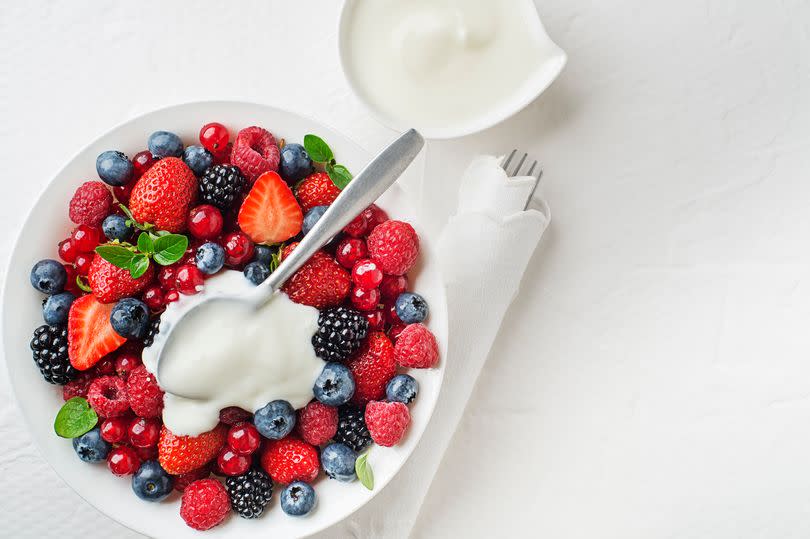Expert explains simple meal swaps that can save you 1,000 calories

A personal trainer and NHS dietician has shared simple ways you can swap out calorie-rich foods without drastically changing your diet. Adam Enaz, who specialises in working with people with diabetes and weight loss, explained how easy alterations can save you 1,000 calories.
Speaking to MailOnline, he said: “If we consume more calories than what our bodies actually need, the excess energy gets stored as fat, eventually leading to weight gain over time. On the other hand, if we intake fewer calories than what our bodies burn off, it forces our bodies to use stored fat for energy, resulting in weight loss.”
Enaz shared some simple swaps you can make to your meals that can save you calories, without making any massive compromises to the food you eat. In the morning, popular choices of granola and toast can be swapped out for zero fat Greek yoghurt and berries.
The health expert explained that granola, despite appearing healthy, is packed with sugar. He also warned toast is carb-heavy.
By replacing them both for a ‘protein-packed’ bowl of Greek yoghurt and ‘antioxidant-rich berries’, you’ll not only be careful with calories but also get important protein and fibre into your diet, he says.

For lunch, the registered dietitian recommended swapping your handy sandwich for soup, and diet fried meats for something grilled instead. He said: “Whether it's a hearty vegetable soup or a protein-packed lentil or chicken soup, this swap provides a comforting and filling lunch without the potentially excessive calories of a sandwich.”
When it comes to dinner, you can still enjoy some of your favourite meals, like a curry, pasta or noodles, but with some ever-so-slight modifications. Enaz explained: “Chicken korma tends to have a high calorie content mainly because of its creamy and rich sauce made with cream, coconut milk, yoghurt or a mix of all of these which are primarily fat-based ingredients.
“Chicken korma commonly includes high fat nuts such as almonds or cashews, further adding to its calorie count. While these things enhance the taste and consistency of the dish, they also contribute to its calorie concentration compared to chicken dishes, with lighter sauces.”
You can also make swaps to your carbs, replacing the likes of white rice with cauliflower rice, carb-heavy noodles for courgette noodles. And if you’re a fan of meat, consider trying leaner white meat instead of red meat.
When it comes to snacks, it can be really tempting to pick up our favourite chocolate bar. However, Enaz suggests swapping a bar, which usually contains around 200 calories, for dark chocolate rice cakes, which contains around 110 calories.
Or even swap out crisps for popcorn. While nuts and dried fruit can be eaten as a part of a balanced diet, both included in the popular Mediterranean Diet, Enaz made an unconventional suggestion - cottage cheese and pineapple.
“Cottage cheese is a low-calorie, high-protein option that provides satiety and essential nutrients, while pineapple adds a sweet and tangy flavour. This snack is perfect for curbing hunger and satisfying your taste buds,” he said.
What the NHS recommends:
The NHS has a dedicated guide to help people lose weight and manage their weight. It recommends these seven things to help you on your journey.
Get active for 150 minutes a week – you can break this up into shorter sessions.
Aim to get your Five A Day – 80g of fresh, canned or frozen fruit or vegetables count as 1 portion.
Aim to lose one to two lbs - or 0.5 to one kg, a week.
Read food labels – products with more green colour coding than amber and red are often a healthier option.
Swap sugary drinks for water – if you do not like the taste, add slices of lemon or lime for flavour.
Cut down food high in sugar and fat – start by swapping sugary cereal for wholegrain alternatives.
Share your weight loss plan with someone you trust – they can help motivate you when you have a bad day.

 Yahoo News
Yahoo News 
